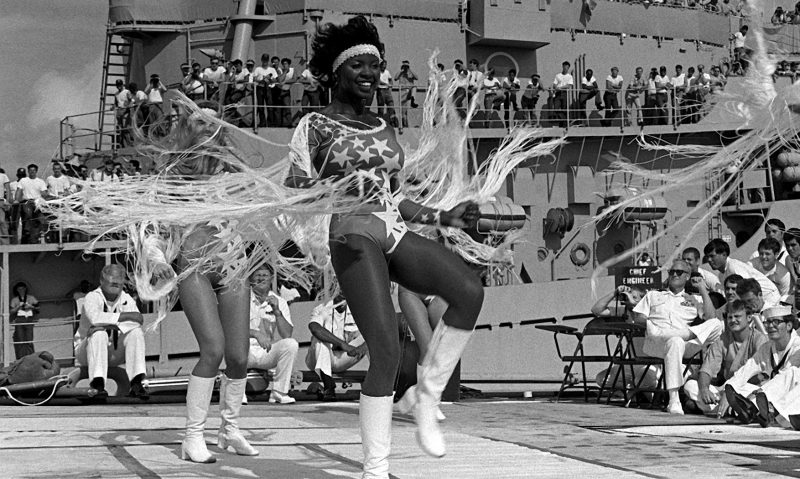Cheerleading as we know it is a colorful sport of its own, and is one very spectacular detail that separates American football from other kinds of sports. Over the years it has evolved from mere cheering of spectators in the stands into something more dramatic, something more enthralling.
Cheerleading puts out a display of boisterousness as flashy troupes of cheerleaders fill the air with energetic chants and astound their audience with jaw-dropping stunts. Through their performances, they set the stage for their teams to ride on the positive atmosphere they create, fueling them with the motivation to dominate.
Cheerleading is known everywhere as a predominantly female affair. But its history is something that may come to you as a surprise.
Firstly, cheerleading has its roots in the United States of America, and is still chiefly practiced in the U.S.
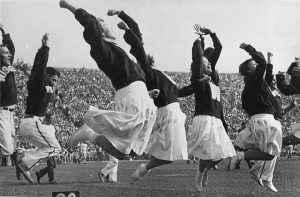
The first taste of collective cheering was felt during the United States’ first-ever intercollegiate football game. During this game, which fielded Princeton against Rutgers University, student fans yelled from the stands as the game intensified. It was a clash of passion against passion, goal against goal, as students on both sides burned with an overwhelming desire to make history.
By 1877, Princeton University had the “Princeton Cheer.” During games, student fans as well as the athletes would yell the cheers. In 1884, Princeton graduate Thomas Peebles moved to Minnesota. He brought along the concept of cheering with organized crowds and incorporated it into football games at the University of Minnesota.
In 1898, organized cheerleading was officially born when Johnny Campbell, a student of medicine at the University of Minnesota, took a megaphone and led a crowd to cheer.
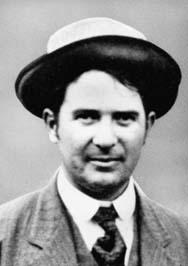
The air was filled with the chant: “Rah, Rah, Rah! Ski-u-mah, Hoo-Rah! Hoo-Rah! Varsity, Varsity, Varsity, Minn-e-So-Tah!” as Campbell and his crowd of cheerers lifted the spirits of the Minnesota players, inspiring them to a win. Johnny Campbell is thus recognized as the first cheerleader.
The effect of the organized cheer did not go unnoticed by the University of Minnesota. A “yell leader” squad comprising six male students was promptly formed. In 1903 the premier cheerleading fraternity Gamma Sigma was formed.
Cheerleading continued to grow in popularity over the years, rapidly becoming prestigious. It went past the boundaries of yelling and chanting, introducing more physical displays such as stunts, dances, jumps, and power tumbling.
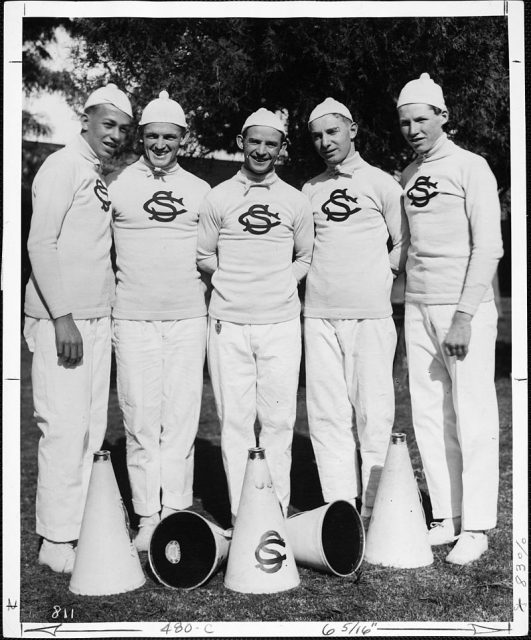
A 1911 article by Nation described young men who spent their college years as cheerleaders as having a princely aura around them as they walked about with their shoulders held high. “Cheerleader” was indeed, a title that many wanted to have.
Interestingly, three former presidents of the United States were cheerleaders. They were Dwight D. Eisenhower, Franklin Roosevelt, and Ronald Reagan.
https://youtu.be/dIVeiG8QXVo
Even more interesting is the fact that although cheerleading is now a women’s sport, cheerleading was originally off-limits to women because the physically demanding exercises were considered too strong for women.
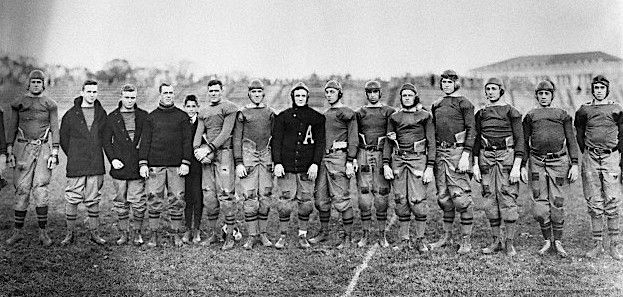
However, women slowly slipped into the act of cheerleading in the 1920s. The University of Minnesota was the first to allow female participation. During this period, other schools did not quickly follow suit.
War and the draft were the factors that completely changed the sport. The drafting of men into the armed forces during World War II created a massive shortage in the cheerleading populace, paving the way for women to make their major entrance into the world of cheerleading.
As soon as they got the chance, women dominated cheerleading, bringing changes along. Spectators would no longer see agile-looking men doing extremely physical stunts while yelling into megaphones. Such sights were replaced by those of cute, cheerful co-eds dancing in skimpy outfits and swinging pom-poms.
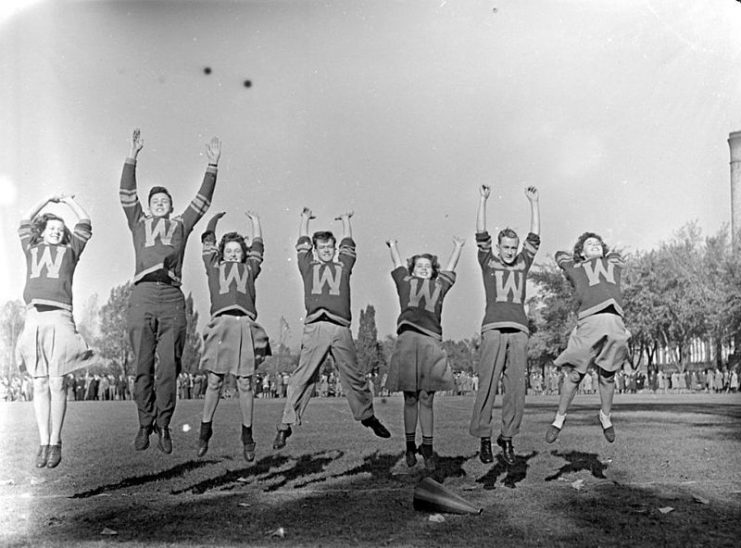
By the time the men returned from the war, cheerleading was a woman’s show. Slowly, male interest in cheerleading began to wane. By late 1975, it was estimated that about 95 percent of cheerleaders were female.
In 1948, Lawrence “Herkie” Herkimer, a former cheerleader at Southern Methodist University, created the National Cheerleaders Association. During the first summer cheerleaders’ clinic in Huntsville, Texas, there were 52 young women in attendance. This marked the beginning of many more cheerleading workshops across the United States.
By 1960, there were cheerleaders in virtually all colleges and high schools in the U.S.
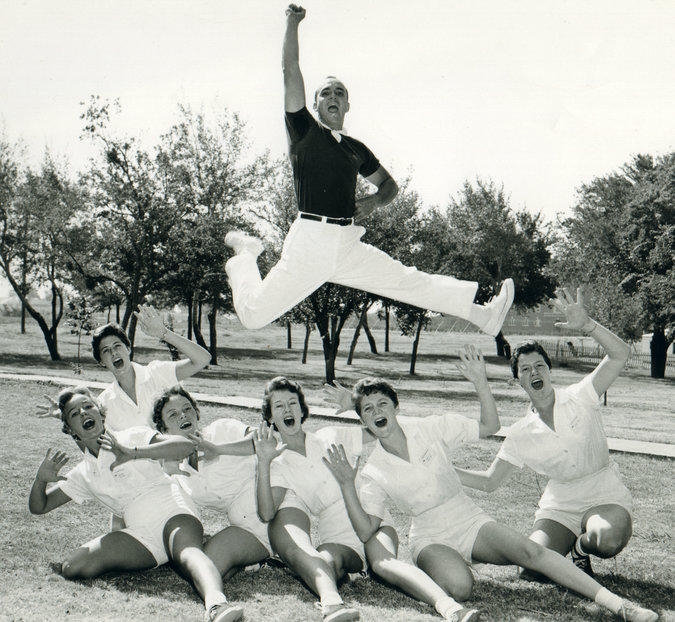
By the end of 1960, cheerleading was introduced into professional football, and by 1981, seventeen teams in the National Football League had their own cheerleaders. Cheerleading eventually went beyond the confines of American football to be incorporated in soccer and basketball as well.
The practice of cheerleading saw continuous changes in the era of female dominance, incorporating both athletism and high-spiritedness. Choreography, pyramids, gymnastics and complex stunts are some of the things that have made cheerleading more exciting in recent times.
Read another story from us: Big Percy Price – The Marine That ‘Beat Up’ Muhammad Ali
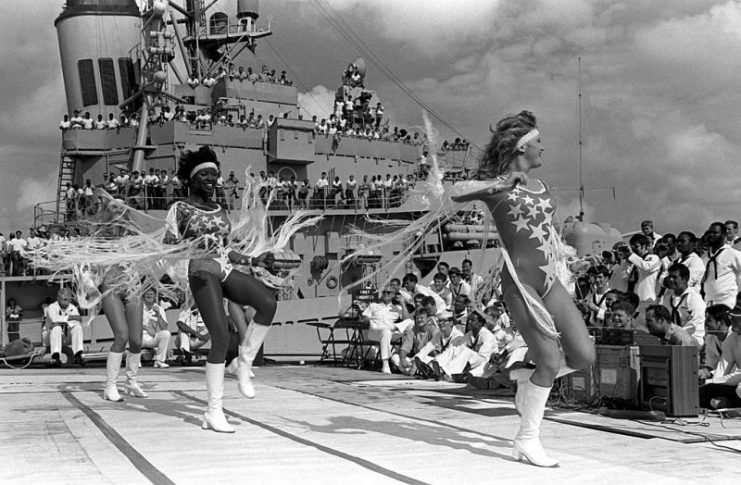
Indeed, cheerleading has come a long way, starting out as an all-male collegiate performance and evolving into a predominantly female, globally recognized sport. One may wonder if it would be the same today if the draft had not taken its original participants off to war.
